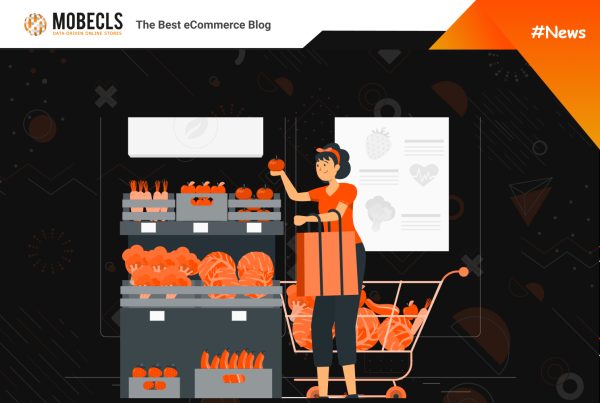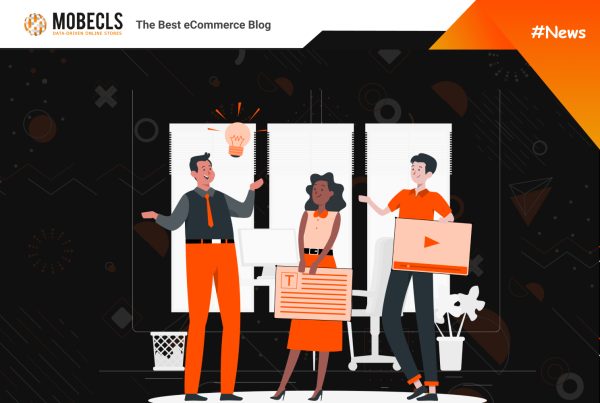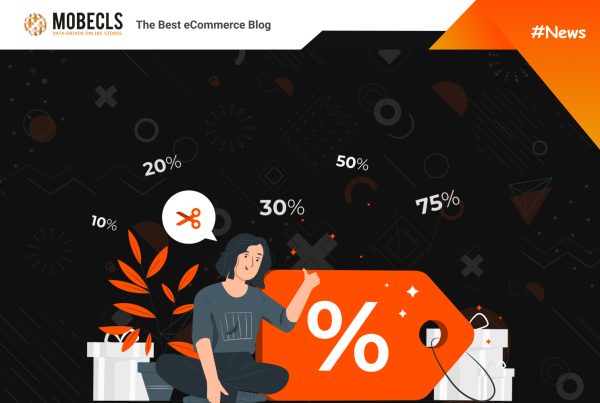There have been a lot of discussion related to metrics used to access retail performance. Before the emergence of electronic commerce in the 90s, comparable store sales performance was a dominating metric. After that, multiple new terms like gross merchandise volume (GMV) & customer lifetime value (CLV) arose.
Since 1990s, physical and electronic worlds have been coexisting. Ordinary brick-and-mortar retailers use their own metrics, while e-commerce entrepreneurs and companies use other principles and terms. Well, what do we have to do with this?
Forbes experts believe that each side must recognize that it is neither right nor wrong. Just remember one of the laws of dialectics: the unity and struggle of opposites. The world is constantly changing. In addition, both types of metrics should remain. Folks who argue that retailers should neither use old methods nor access performance using segregated channels can’t receive the full picture. Old-school metrics are still important for using in the proper context.
Also, it is advisable to use a newly appeared North Star Metric (NSM), which has been described as “a single indicator that reflects the core value of the product for customers.” North Star Metric for Facebook is user’s daily activity. For Square, it is the total amount of transactions. The indicator of the value of service for hosts and guests in Airbnb is the number of booked accommodations, etc.
What Is the Most Important Metric?
What is the most important metric which shows long-term well-being of a retailer? This refers to first product searches. Yes, it may sound a little crazy. However, in 10 years, it will be probably an everyday reality.
Innovations are cycled each 20-30-year period. We can come back to the previous century and see that there were two largest trend changes: shopping malls and increase in mass merchants number in the 50s/60s and then, as you might have guessed, electronic commerce in the 90s.
The next huge innovation is to be sometime between 2020 & 2030. We assume that this could be the creation of the first personalized physical retail store.
Valuableness of First Product Searches
First product searches are expected to be leading indicators predicting prosperity in the new era due to the fact, that they reflect consumers’ affinity both for digital and physical retail experience. With the course of time, they will probably show in the most accurate manner who is successful in this field, and who is not.
Several recent studies clearly illustrate this issue. The most important survey, which should be given attention to, is Survata’s survey about first product searches, which begin on Amazon website. Nearly 50% of customers use this website first when searching for products, 36% use Google search engine. Only fifteen percent respondents address actual retailers (brands) and this indicator is decreasing with each year. The conclusion from this is as follows: when customers exactly know what they want, they open Amazon.
Other studies, like JollyGoodGifts’s one, confirm the abovementioned results. It has shown that Amazon may take even higher positions than Survata showed. According to it, young people (aged 18-24) interact better with Amazon. The same applies to women, who account for a large share of retail money spending in the United States.
From this we can draw the following conclusions:
- Amazon and Google are the main virtual malls in America, consumers first open these sites when they are looking for a product.
- Brand retailers are becoming less popular.
- An increase in the percentage of users who are looking for products on Amazon and Google will negatively affect the condition of branded retailers.
First product searches seem objective and do not have survey bias. However, it is also necessary to study some questions that have not been included in the above studies. So, these data can be dismembered to understand the strength of a particular vendor.
The above studies are compiled globally and they do not give an answer to the question whether customers’ behavior is the same for different groups of products (commodities, beauty goods, and clothes). Most probably not. For example, it seems to us that a larger percentage of consumers are looking for clothes on retailers’ websites.
When Customers Do Not Know What They Need
The abovementioned figures don’t allow us to evaluate strength of online shopping malls and particular retailers when customers do not know what they need.
Let’s consider the Facebook case. It is especially relevant especially against the background of the rumors of launching Instagram shopping application. This social network does not appear in the surveys mentioned above. In Google and Amazon, users are looking for what they want, whereas Facebook knows what users want implicitly, because they are watching posts and pictures there and then receive inspiration for buying products.
Facebook along with Instagram give a virtual world where the desires of consumers are understandable. The mechanism of “search” is different there. Users just see what they like and decide to buy this product. This is an excellent advantage. Rightly so, Amazon tried to create an Amazon Spark network (but without success). An implicit understanding of the desires of users, even when they themselves do not exactly know what they want, on the basis of their daily behavior, is very important, especially considering 2 billion Facebook users.
Facebook knows about this advantage. There is a possibility that it will try to disrupt B2C e-commerce and create an innovative outlet. In addition, social commerce companies, which have sniffed this mini trend, are emerging, for example, MeSpoke and Threads.
Technologies Offered by MeSpoke and Threads
MeSpoke shortens the search and purchase cycle. A patented technology captures metadata from products’ pictures and if a consumer who sees this is interested, he/she is transferred to the retailer (manufacturer). Using MeSpoke, people can create their commercialized marketplaces in support of brands they admire.
Threads also transform commercial tools by offering social messaging applications. There, users will find a world of chat trading, a personalized set of products and service through messengers. Amazon and Google do not have such tools at the moment. Therefore, there may be significant changes in e-commerce in that area when people need inspiration before buying anything.
We emphasize this because messaging, social feeds, and the way how folks search for products are underlying factors for future changes.
The Bottom Line
The place and method of search is very important. As the number of search requests of retailers or brands decreases, their financial situation appears to be gradually deteriorating.
Visiting brick-and-mortar stores and traffic to online sites just give a view of the past. These factors do not tell us what will happen in the future. Companies can rejoice in a significant improvement of online sales during the quarter, but this does not mean that their performance will be effective in the future.
In addition, factors that increase the popularity of the brand remain to be a vague issue. It is not known what they are associated with: the growth of the assortment, the good price, the love to the brand, etc. The above metrics do not answer this question, so we need new ones that will be more transparent. Therefore, it seems that individual companies are experiencing hard times, as they are essentially blind in this regard. Improved metrics like North Star Metric should appear in the near future.




